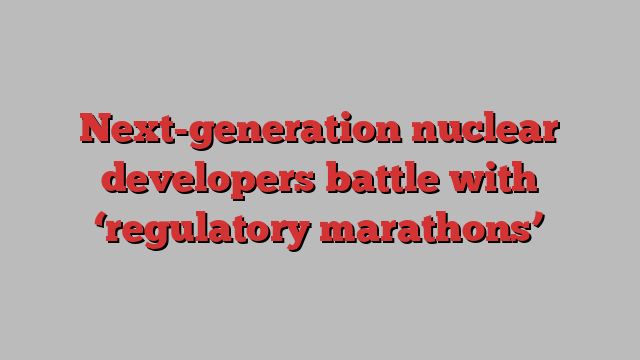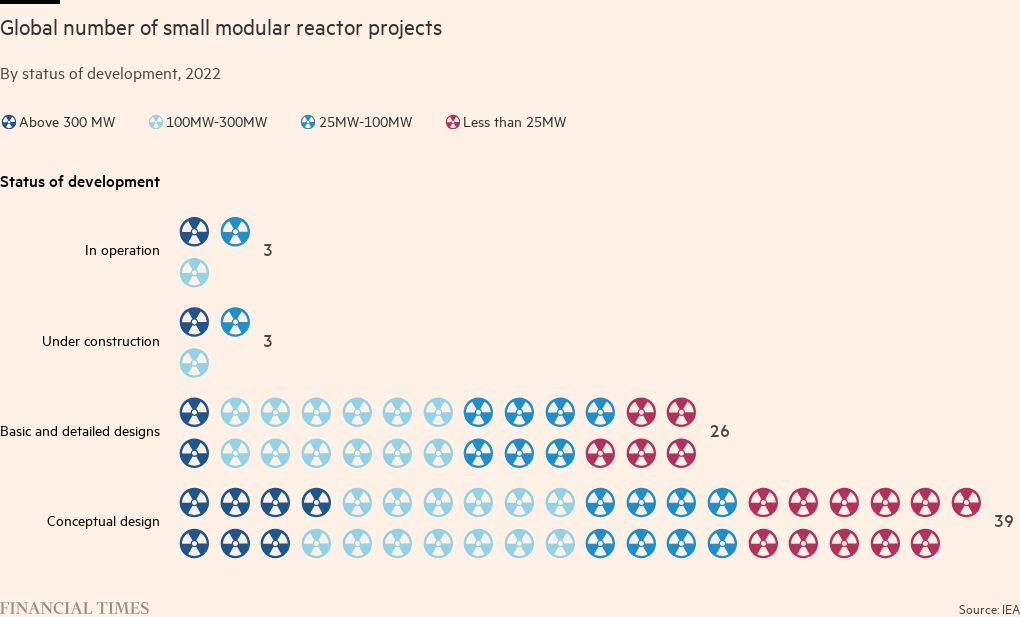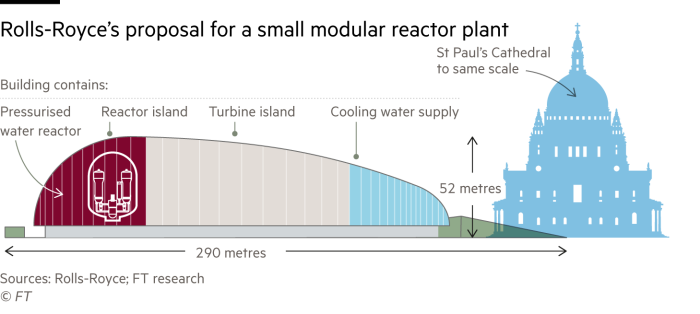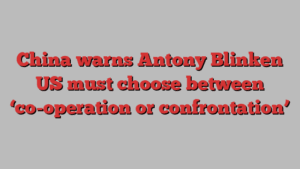
Executives at Rolls-Royce expect UK regulators will take four and a half years to assess the safety of its design for a small modular reactor. Yet the UK engineering group must endure more lengthy approval processes in other countries where it wants to build its nuclear power unit.
“It’s incredibly time-consuming,” Helena Perry, Rolls-Royce’s regulatory director, said of the typical international approval process. The company submitted its plan to the UK Office for Nuclear Regulation two years ago.
Rolls-Royce is one of many developers and officials backing a global drive to overhaul nuclear regulation amid concern the set-up is ill-suited to the nascent industry for small modular reactors (SMRs), which have attracted huge interest as countries look to find new sources of low-carbon energy.
Since 2022 the International Atomic Energy Agency has led efforts to harmonise regulatory standards and processes; the first phase is due to be completed this year. Yet there are doubts over how much can be achieved, given the sensitive nature of the industry and embedded working practices.
“Countries approach regulation differently, from a different starting philosophy,” said Allison Macfarlane, former chair of the US Nuclear Regulatory Commission (NRC). “You can share information and try to align, but you are never going to have the same regulatory scheme everywhere.”

The push to overhaul regulation comes as the hype around the technology has been tempered by concerns over long development timeframes and some early setbacks. Developer Nu-Scale cancelled what would have been the first SMR in the US last year after not enough buyers signed up for its power. Construction costs had risen sharply the previous year.
“From my analysis, the thing that’s holding them up is the economics, the supply chains,” added Macfarlane. “There’s lots of roadblocks.”
The International Energy Agency estimates nuclear power capacity will need to more than double by 2050 to meet global goals of net zero carbon emissions. More than 20 countries, including the US and the UAE, agreed at the COP28 climate conference in November to work towards tripling capacity.
Developers argue prefabrication — large parts of SMRs are designed to be built in factories rather than onsite — make them easier to deploy, driving costs down as several smaller models are completed. That prospect has attracted politicians and investors looking to avoid the cost blowouts and lengthy development times of large-scale plants.
About 60-70 SMR designs are being developed, according to nuclear energy bodies, ranging from those drawing on standard technology used by large-scale plants today, to more “advanced” reactors using, for example, lead or sodium as coolants.
Yet only three have been awarded an operating licence: in China, Russia and a test reactor in Japan, and supporters fear that current regulation could hinder the rollout of others. Design approvals typically take several years given the complexity of reactor designs and dangers of radioactive materials.

“For this business model to succeed, we need regulatory approaches to adapt to a new circumstance,” said Rafael Grossi, director-general of the International Atomic Energy Agency (IAEA). “We cannot afford the luxury of these regulatory marathons lasting five, six, seven years.”
Many point to aviation as an example for the nuclear industry to follow. “[Airlines] don’t build a different design for each market, making the quality higher and bringing costs down,” said William Magwood, chief executive of the Nuclear Energy Association, an intergovernmental agency.
“If every country needs a slightly different design because of different regulatory requirements, this makes getting that efficiency very, very difficult.”
The IAEA talks, which involve regulators from 29 countries as well as developers, have included discussion on areas such as information sharing and how to implement greater collaboration. One prospect is that reactor designs would go through an initial review under a global framework, cutting the time spent in national processes.

Yet consensus is elusive. “It’s been a really useful discussion which has pushed the thinking,” said Rolls-Royce’s Perry. “Unfortunately, there are a few strong voices pushing for ‘we’re doing it like the aero industry or we’re not doing it at all’. That’s not going to be quick enough for the energy transition.”
Member countries would still need time to adopt any changes agreed at the IAEA level.
“People understand the benefits and there are a lot of people with open minds,” said David Durham, president for energy systems at Westinghouse Electric, a US nuclear power company. “But I don’t think anyone thinks this is going to be resolved tomorrow.”
Efforts at international reform come as the Nuclear Regulatory Commission in the US, home to several of the prospective designs, has taken steps to accelerate domestic SMR approvals.
TerraPower, a next-generation reactor company founded by billionaire philanthropist Bill Gates, could become a test case. It applied for a construction permit to the regulatory commission this month for the first commercial nuclear plant that uses liquid sodium as a coolant, which they say would provide a lower-cost alternative to water-cooled reactors.
“NRC is seen as a gold standard for safety,” said Chris Levesque, TerraPower chief executive. “So if we want to bring a fairly new reactor design to Asia, Europe, Africa and Indonesia, we have to prove [them] in rich countries first and we will do that with the NRC.”
Some collaborative efforts are already under way. Last month, the UK joined Canadian and US regulators in agreeing to work more closely together assessing SMR designs. European regulators are doing a joint early review of EDF’s Nuward design.
“We consider the greatest potential for streamlining and accelerating processes to be via much greater collaboration,” said Jane Bowie, director of regulation at the new nuclear reactors division of the UK’s Office for Nuclear Regulation.
European regulators are also sitting in on the ONR’s assessment of Rolls-Royce’s design. The moves mark an important change in approach and the industry hopes there is more to come.
“I see genuine effort across the board. There’s a recognition nuclear has to be part of the energy mix going forward,” said Ronan Tanguy, programme lead for safety and licensing at the World Nuclear Association, which is also working on the issue.
But regulatory harmonisation was absolutely essential, he added: “Without it [SMRs will] struggle to be competitive outside of very large markets.”

